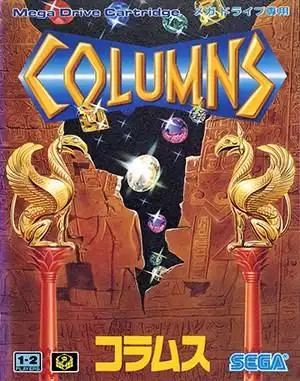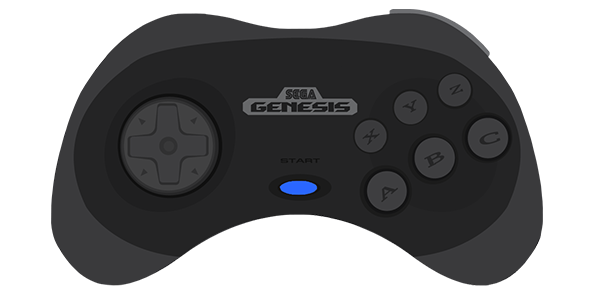The click of the controller, the hypnotic music, the cascade of glittering jewels... if you owned a Sega Genesis or Mega Drive back in the day, chances are you spent countless hours with Columns. While Tetris might have dominated the global puzzle scene, Sega offered its own distinct take on falling block fun, and for many, Columns holds a special place in their retro gaming hearts.
It wasn't just on Sega consoles, though. Columns started life elsewhere before Sega picked it up and turned it into an arcade and home console hit. It became one of those essential games you just had to have, offering a different kind of challenge from its more famous geometric cousin.
Ready to dive back into the well? Let's explore what made Columns a retro gem.
What Exactly is Columns?
At its core, Columns is a tile-matching puzzle game. Created originally by Jay Geertsen in 1989, it found its true fame after Sega acquired the rights. Instead of geometric shapes made of blocks, you're dealing with vertical columns, each made up of three different symbols – usually colorful jewels or blocks.
These columns fall from the top of the screen into a confined well. Your goal? To match three or more identical symbols in a line, either horizontally, vertically, or diagonally. Do that, and they disappear, causing any symbols above them to fall and potentially trigger glorious chain reactions!
How Do You Play Columns? The Gem-Dropping Mechanics
Playing Columns is simple to pick up, but mastering it is another story. As a column of three symbols falls, you have two main actions:
- Move the Column: You can shift the entire three-symbol column left or right as it descends.
- Cycle Symbols: This is where Columns really differs from Tetris. You can rotate the order of the three symbols within the falling column. This lets you position the crucial symbol exactly where you need it before it lands.
Once a column lands, gravity takes over. Any matched symbols vanish, and everything above them drops down. This can lead to satisfying combos if falling symbols create new matches. As you play, the speed increases, the pressure mounts, and the screen fills up. The game ends when the well reaches the top.
There were often different modes too, like "Flash Columns" where you had to clear lines down to a specific target jewel, adding a different objective beyond just survival.
Columns vs. Tetris: The Sega Spin
It's impossible to talk about Columns without mentioning Tetris. Both are falling-block puzzle games, but their core mechanics create vastly different experiences.
- Shapes vs. Columns: Tetris uses varied shapes (tetrominoes); Columns uses fixed columns of three.
- Rotation vs. Cycling: Tetris rotates the entire shape; Columns cycles the order within the column.
- Matching: Tetris only matches horizontal lines; Columns matches horizontally, vertically, and diagonally. This diagonal matching adds a unique strategic layer.
- Gravity: Both feature gravity, but Columns' mechanic of symbols falling individually after a match feels distinct from Tetris's line clears.
While Tetris is about fitting shapes, Columns is more about strategic placement and quick cycling to create specific color/symbol arrangements, often banking on those diagonal matches and gravity-induced combos.
Where Did We Play It? Ports and Nostalgia
Columns became synonymous with Sega, largely thanks to its excellent ports:
- Sega Genesis / Mega Drive: This is arguably the most iconic version for many home console players. It captured the arcade feel perfectly and was a staple of the system's library.
- Sega Game Gear: As a launch title and pack-in game, Columns was crucial for Sega's handheld. This version had slightly different graphics and music arrangements to fit the hardware but provided the same addictive gameplay on the go.
- Arcades: Where it first made a splash under Sega's banner, proving its addictive nature in coin-op form.
Beyond Sega's own hardware, Columns also appeared on systems like the MSX2 and Atari ST before its Sega popularization.
Columns Today: Reliving the Gem-Dropping Fun
The good news for retro fans is that Columns is still readily available today! Sega has included it in numerous compilations and services over the years.
- Sega Genesis Mini: The game is featured on this popular plug-and-play console.
- Sega Genesis Classics / Sega Mega Drive Classics: Available on modern platforms like PlayStation, Xbox, Nintendo Switch, and PC (via Steam), these collections often include Columns.
- Nintendo Switch Online + Expansion Pack: Columns was added to the Sega Genesis library for this service in 2022.
- Other Compilations: It has appeared on PS2, PSP, Wii Virtual Console, PS3, Xbox 360, and more.
So, whether you want to experience it on original hardware, an emulator like DOSBox for the PC version (if you can find it!), or modern collections, that familiar gem-matching challenge is just a few clicks away.
Columns might not have reached the same global phenomenon status as Tetris, but its unique gameplay, catchy music (composed by Tokuhiko Uwabo, with tracks famously named after the Greek Moirai), and association with the golden era of Sega make it a beloved puzzle classic for retro gamers. Picking it up again is like visiting an old friend – simple, challenging, and wonderfully nostalgic.
FAQ
Q: Who originally created Columns? A: Columns was originally created by Jay Geertsen in 1989 before Sega acquired the rights and released it commercially.
Q: How is Columns different from Tetris? A: The main differences are the shapes (Columns uses fixed columns of three symbols vs. Tetris's varied shapes), the manipulation (Columns cycles symbols within the column vs. Tetris rotating the whole shape), and matching (Columns matches horizontally, vertically, and diagonally vs. Tetris only horizontally).
Q: Is Columns a Sega game? A: While originally created independently, Sega acquired the rights and is responsible for its widespread popularity and most famous versions (arcade, Genesis, Game Gear), making it strongly associated with the Sega brand.
Q: Can I play Columns on modern consoles? A: Yes! Columns is included in many modern retro game compilations like "Sega Genesis Classics" and is available on services like Nintendo Switch Online + Expansion Pack.


